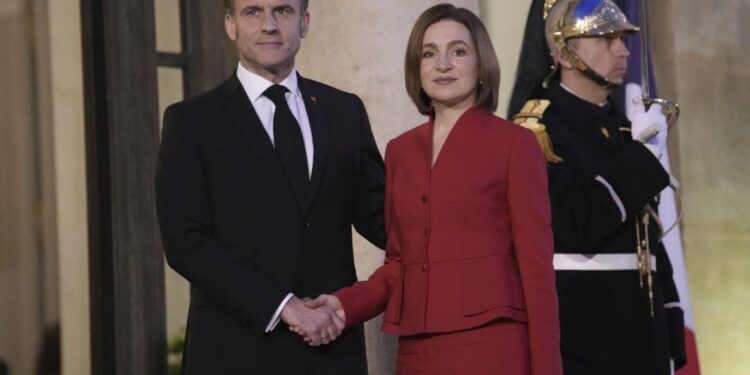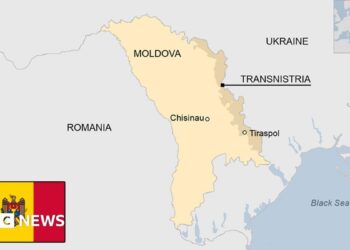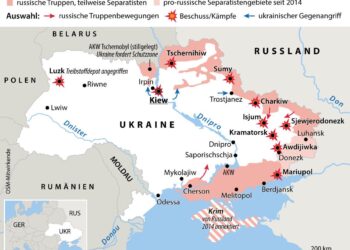Enhancing Moldova’s Air Defense: A Strategic Initiative by the EU
In a pivotal move to bolster regional security, the European Union has pledged its support to Moldova in upgrading its air defense capabilities, responding to escalating threats posed by Russian drone operations. As tensions rise in Eastern Europe, this initiative is designed not only to protect Moldova’s sovereignty but also to fortify its defenses against potential aggressors. This article delves into the specifics of the EU’s assistance, its implications for Moldova, and the wider security context in Eastern Europe.
EU Assistance for Strengthening Moldova’s Air defense
The European Union is set to make important investments aimed at enhancing Moldova’s defense infrastructure, particularly in light of increasing threats from unmanned aerial vehicles (UAVs) operated by Russian forces. this initiative underscores the EU’s strategic commitment to reinforcing security for its Eastern neighbor through a complete approach centered on air defense. Key elements of this support include:
- Military Training Programs: Providing specialized training sessions for Moldovan military personnel on operating advanced air defense systems.
- Equipment provision: Supplying cutting-edge radar systems and interception technologies designed specifically for detecting and neutralizing drone threats.
- Intelligence Sharing: Enhancing intelligence-sharing frameworks that improve situational awareness across borders.
This commitment not only offers technical assistance but also aims at strengthening military ties between Moldova and NATO, thereby improving resilience against external threats. As Moldova navigates a complex geopolitical landscape,upgrading its air defense capabilities will be essential not just for national integrity but also for fostering regional stability within Eastern Europe. A detailed implementation plan is expected over the coming months that will align Moldovan defense strategies with European standards.
Collaborative security Efforts: Tackling Drone Threats
The growing use of drones in contemporary conflicts emphasizes an urgent need for regional allies like Moldova to enhance their defensive measures. In response to increasing drone incursions—particularly from Russian forces—the European Union has intensified efforts aimed at assisting Moldova in fortifying its air defense systems. This strategic partnership seeks not only technological advancements but also comprehensive training programs focused on establishing robust defenses against potential aerial assaults that could disrupt regional peace.
A multifaceted strategy is being developed encompassing various aspects of defensive readiness including:
- Complex Surveillance Systems: Deployment of advanced radar technology capable of effectively detecting and tracking UAV movements.
- Moldovan military Training: Conducting workshops centered around counter-drone tactics and engagement strategies.
- Financial Investment: Allocating resources specifically targeted towards acquiring anti-drone technologies vital for national security.
The EU’s initiatives aim not only at bolstering Moldovan defenses but also setting a benchmark for collaborative security efforts among Eastern European nations facing similar challenges. By merging technological innovations with strong partnerships,there exists potential for creating a more secure surroundings across borders.
Implementation Strategies For Effective Air Defense Solutions
The recent decision by the European Union regarding enhancements in air defense capabilities represents a crucial shift within regional security dynamics amid rising concerns over drone warfare initiated by Russia.The collaboration between EU member states and Moldova includes providing advanced systems alongside intelligence sharing and training resources aimed at developing integrated solutions such as radar combined with interception technologies; thus enabling a multilayered defensive architecture capable of effectively addressing evolving aerial threats.
This holistic approach highlights that countries must upgrade both hardware capabilities while collaboratively crafting cohesive strategies facilitating rapid responses along with heightened situational awareness during crises related directly or indirectly towards UAV engagements.
The following key elements should be prioritized when executing these new air defense strategies:
- Synchronized Operations: ensuring seamless communication between newly integrated systems into existing NATO frameworks enhances overall operational effectiveness.















Melania Trump’s Indifference to Slovenia: A Hidden Blessing Unveiled